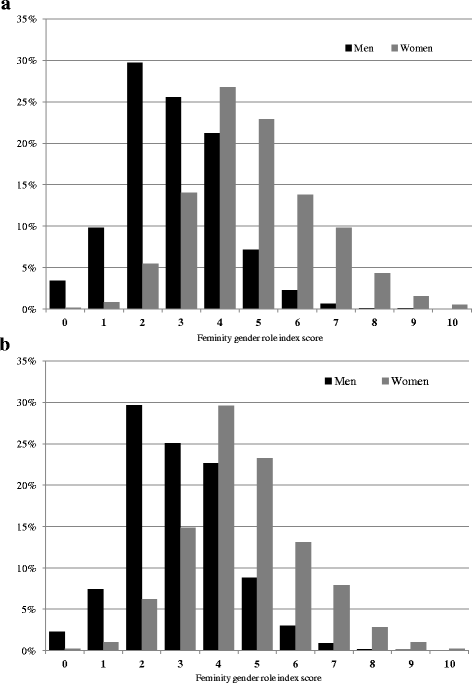Measuring gender when you don't have a gender measure: constructing a gender index using survey data
- PMID: 27233478
- PMCID: PMC4884354
- DOI: 10.1186/s12939-016-0370-4
Measuring gender when you don't have a gender measure: constructing a gender index using survey data
Abstract
Background: Disentangling the impacts of sex and gender in understanding male and female differences is increasingly recognised as an important aspect for advancing research and addressing knowledge gaps in the field of work-health. However, achieving this goal in secondary data analyses where direct measures of gender have not been collected is challenging. This study outlines the development of a gender index, focused on gender roles and institutionalised gender, using secondary survey data from the Canadian Labour Force survey. Using this index we then examined the distribution of gender index scores among men and women, and changes in gender roles among male and female labour force participants between 1997 and 2014.
Methods: We created our Labour Force Gender Index (LFGI) using information in four areas: responsibility for caring for children; occupation segregation; hours of work; and level of education. LFGI scores ranged from 0 to 10, with higher scores indicating more feminine gender roles. We examined correlations between each component in our measure and our total LFGI score. Using multivariable linear regression we examined change in LFGI score for male and female labour force participants between 1997 and 2014.
Results: Although women had higher LFGI scores, indicating greater feminine gender roles, men and women were represented across the range of LFGI scores in both 1997 and 2014. Correlations indicated no redundancy between measures used to calculate LFGI scores. Between 1997 and 2014 LFGI scores increased marginally for men and decreased marginally for women. However, LFGI scores among women were still more than 1.5 points higher on average than for men in 2014.
Conclusions: We have described and applied a method to create a measure of gender roles using survey data, where no direct measure of gender (masculinity/femininity) was available. This measure showed good variation among both men and women, and was responsive to change over time. The article concludes by outlining an approach to use this measure to examine the relative contribution of gender and sex on differences in health status (or other outcomes) between men and women.
Keywords: Gender; Gender roles; Labour force; Measurement; Sex; Survey data.
Figures


References
Publication types
MeSH terms
Grants and funding
LinkOut - more resources
Full Text Sources
Other Literature Sources

